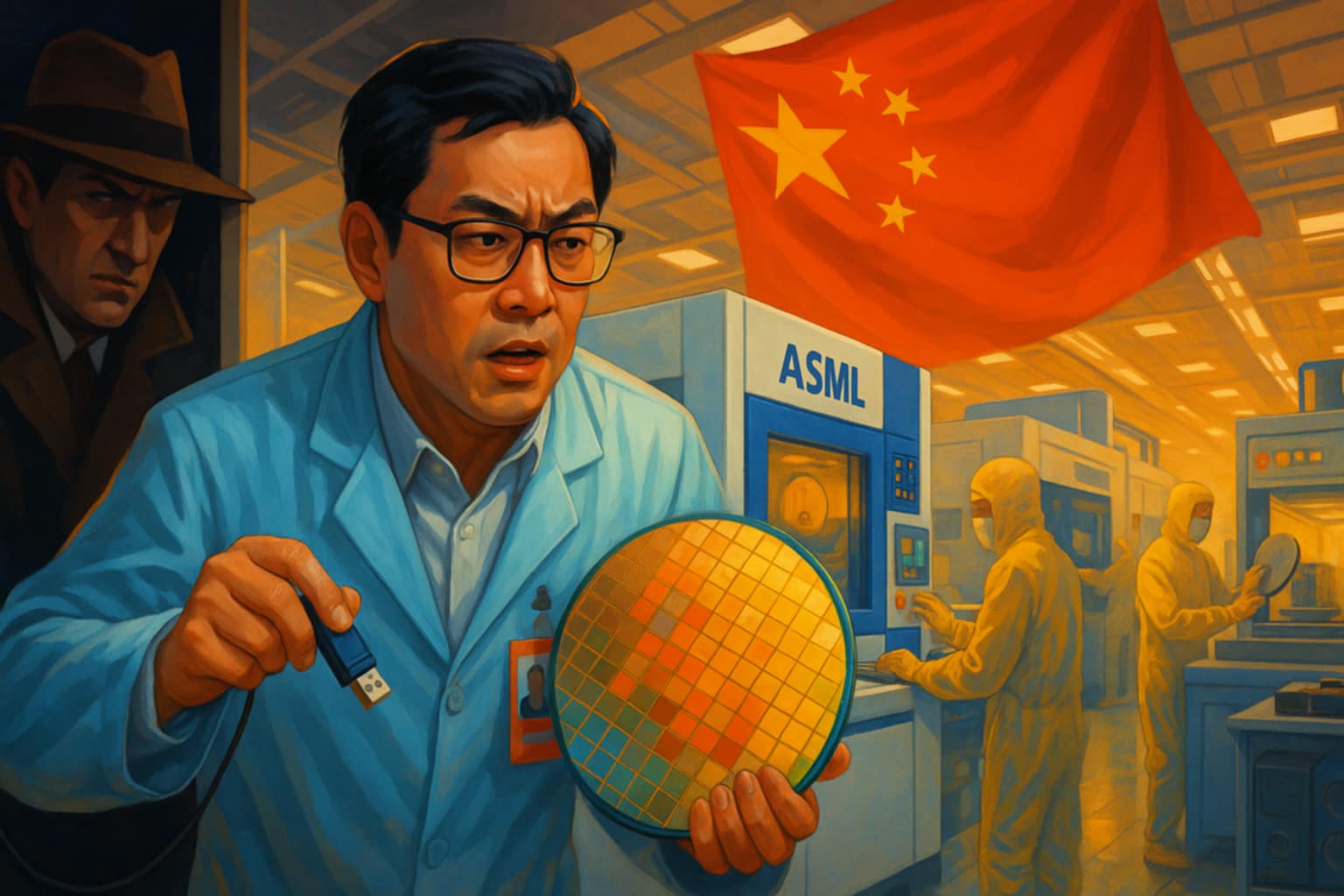Can China Crack the Chip Code Without Stealing It?

In the industrial corridors of south-eastern Beijing, engineers at Semiconductor Manufacturing International Corporation (SMIC) are racing against time and sanctions. Their goal is to scale production of 14nm and 7nm chips technologies that, while not cutting-edge by global standards, represent a defiant leap for a company blacklisted by the United States for half a decade. But SMIC’s ambition is not merely to fabricate chips. It seeks to do so using exclusively Chinese-made equipment, a feat that would signal technological sovereignty in a domain long dominated by Western innovation.
This ambition is not isolated, it is state-mandated. The Chinese government, under the aegis of the CCP, has poured billions into building a domestic semiconductor ecosystem. The crown jewel of this effort is photolithography, the ultra-precise process of etching circuits onto silicon wafers. At the apex of this technology sits ASML, the Dutch firm whose Extreme Ultraviolet (EUV) machines are indispensable for producing sub-5nm chips. Each machine costs over $300 million and contains thousands of precision-engineered components. Due to export controls, China has been locked out of this technology. And so, Beijing has turned to a familiar playbook: state subsidies, academic mobilization, and critically, industrial espionage.
China’s semiconductor push is not just about economic competitiveness. It is a geopolitical manoeuvre rooted in the CCP’s techno-nationalist doctrine. The 20th Party Congress made clear that technological self-reliance is a matter of national security. The state has mobilized a sprawling network of firms, Naura Technology, AMEC, and others, alongside universities and military-linked labs to develop indigenous alternatives to ASML’s EUV systems. Experimental approaches like laser-induced discharge plasma (LDP) are being explored as potential substitutes for ASML’s proprietary laser-produced plasma (LPP) method.
Yet the road to replication is steep. ASML’s EUV machines took decades to develop, requiring global collaboration and billions in R&D. China’s attempt to reverse-engineer this technology in a fraction of the time is not just ambitious, it’s emblematic of a broader pattern of shortcutting innovation through appropriation.
China’s track record in semiconductor development is marred by systemic IP theft. According to a CBS News investigation, Chinese state-sponsored hackers, particularly the notorious APT 41 group have siphoned off trillions of dollars in intellectual property from over 30 multinational firms. These thefts include blueprints for fighter jets, missile systems, and proprietary chip designs. The campaign, dubbed Operation CuckooBees, operated undetected for years, exfiltrating gigabytes of sensitive data from companies across North America, Europe, and Asia.
The theft is not limited to cyber operations. The CCP has institutionalized a multi-pronged strategy: forced technology transfers through joint ventures, coercive licensing agreements, and aggressive talent poaching. The U.S. Trade Representative’s Section 301 report details how foreign firms operating in China are often compelled to share proprietary technologies as a condition for market access. This “introduce, digest, absorb, re-innovate” model is not innovation, it’s state-sanctioned piracy.
Perhaps the most brazen example is ASML itself. In 2018, the Dutch firm sued Xtal Inc., a Silicon Valley company founded by a former ASML engineer, for stealing source code and transferring it to Dongfang Jingyuan Electron Ltd., a Beijing-based firm backed by the Chinese government. The court found that 2 million lines of ASML’s proprietary code had been exfiltrated and shared with Chinese entities. The engineer, now thriving in China, remains under an arrest warrant in California.
Despite this, ASML continues to operate in China, even opening a Reuse & Repair Center in Beijing. This paradox engagement despite theft underscores the dilemma faced by Western firms: China is too large a market to ignore, even as it undermines the very foundations of fair competition.
The launch of Huawei’s Mate 60 Pro, powered by a domestically produced 7nm chip, and was hailed as a triumph of Chinese ingenuity. But analysts remain skeptical. Without access to EUV technology, the chip’s fabrication likely relied on older Deep Ultraviolet (DUV) methods, possibly enhanced through undisclosed foreign components or reverse-engineered processes. The CCP’s narrative of self-reliance masks a deeper truth: progress built on stolen scaffolding is not sustainable.
Technically, perhaps one day. But ethically and strategically, the path China has chosen, one paved with coercion, espionage, and disregard for global norms raises profound questions. The CCP’s approach to semiconductor supremacy is not just a challenge to Western industry. It is a challenge to the principles of innovation, transparency, and rule of law.
If China succeeds in building its own ASML, it will not be a victory of engineering alone. It will be a testament to a regime that weaponizes theft as policy and cloaks appropriation in the language of progress. The world must decide whether to reward such behaviour, or resist it.




![From Kathmandu to the World: How Excel Students Are Winning Big [Admission Open]](https://nepalaaja.com/img/70194/medium/excel-college-info-eng-nep-2342.jpg)
